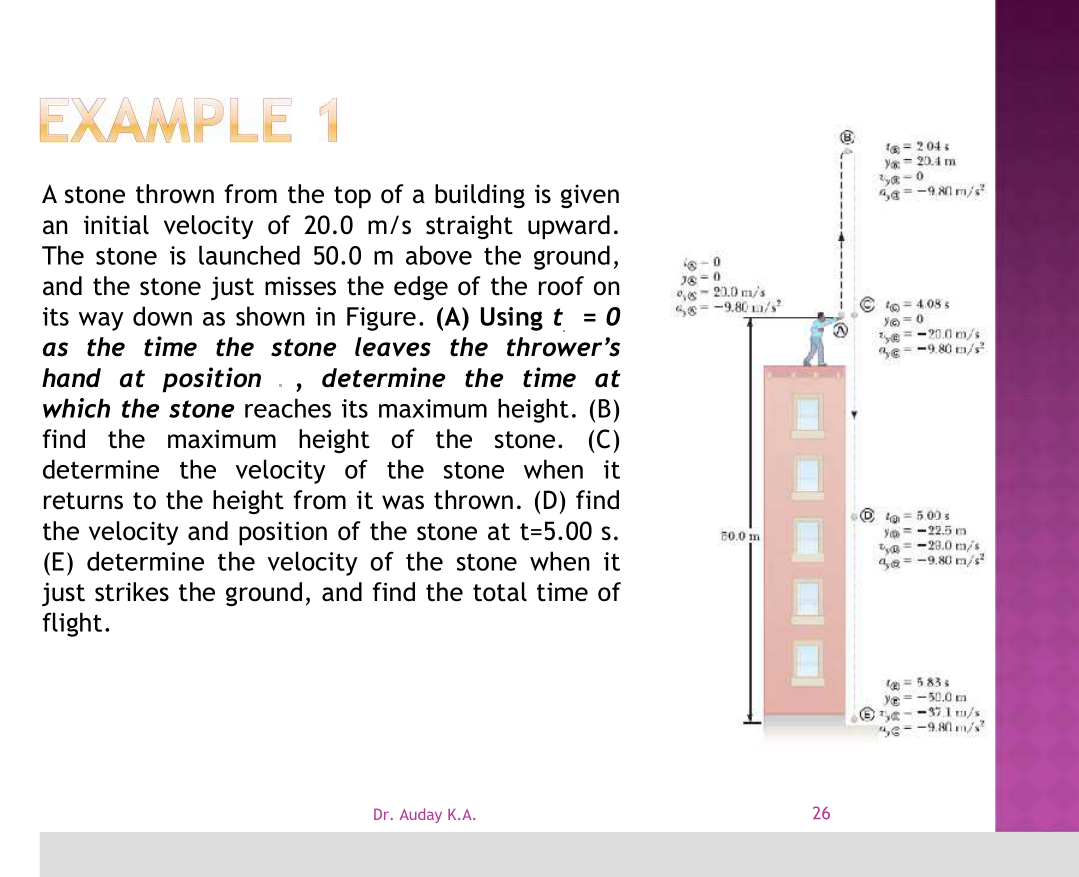Falling objects question?

1 Answer
Applicable kinematic expressions are
#h=h_0+ut+1/2g t^2# ......(1)
where#h# is height at time#t# ,#h_0# is height at#t=0# ,#u# is initial velocity and#g=9.80\ ms^-2# is acceleration due to gravity.
#v=u+g t# .......(2)
where#v# is velocity at time#t#
- Let us take origin at the ground level.
- As the stone is thrown upwards, along the
#+ve# -#y# axis and gravity is acting in the downwards direction, it is taken as#-ve# . Our equations become#h=50.0+20.0t-4.90 t^2# .........(3)
#v=20.0-9.80 t# ..............(4)
(A) When stone reaches maximum height its velocity becomes
#0=20.0-9.80 t#
#=> t=20.0/9.80=2.04\ s# , rounded to two decimal places.
(B) Insert calculated value of
#h_max=50.0+20.0xx2.04-4.90 xx(2.04)^2#
#h_max=50.0+40.8-20.4=70.4\ m#
(C) Ignoring friction, velocity of stone when it reaches same height from it was thrown will be equal and opposite to the initial velocity of projection.
#v=-20.0\ms^-1#
(D) Velocity of stone at
#v=20.0-9.80 xx5.00=-29.0\ ms^-1#
Position of stone at
#h=50.0+20.0xx5.00-4.90 xx(5.00)^2=27.5\ m#
(E) When the stone strikes ground its height
#0=50.0+20.0T-4.90 T^2#
#=>4.90 T^2-20.0T-50.0#
Solving the quadratic we get
#T=(20+-sqrt(400-4xx4.90xx(-50.0)))/(2xx4.90)#
#=>T=(20+-sqrt(400+980))/(9.8)#
#=>T=(20+-37.15)/9.80#
#=>T=5.83\ s# ,
We have ignored the
Velocity of stone when it just strikes ground is found by inserting value of
#v=20.0-9.80 xx5.83=-37.1\ms^-1#
